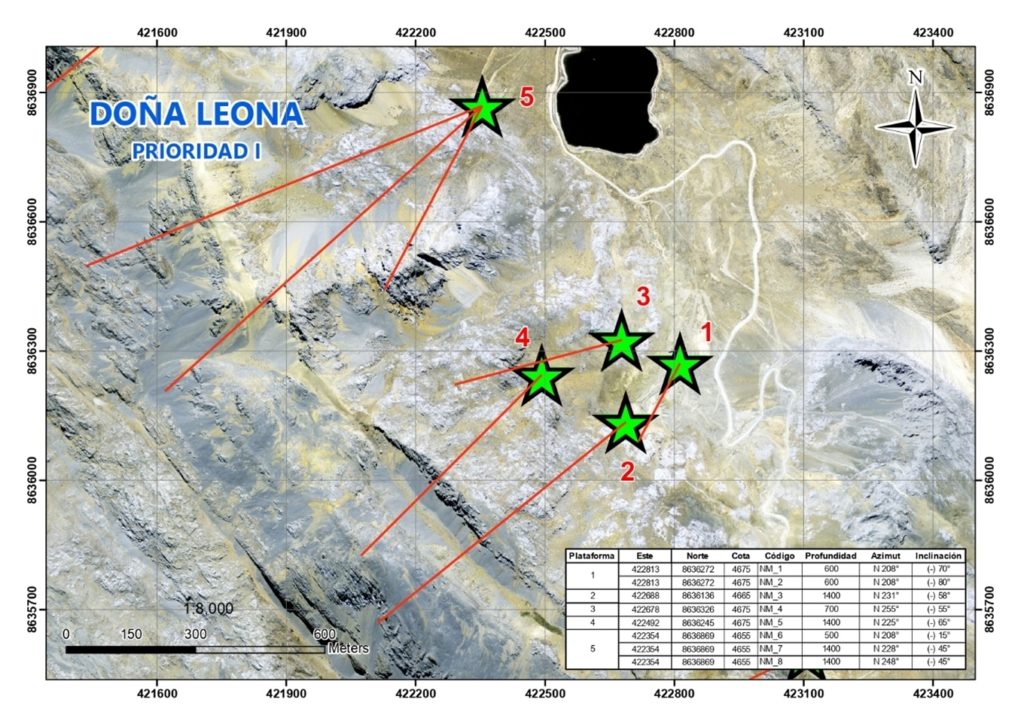Sierra Metals Inc reports that the company has received its permit to construct the expansion of the tailing dam facility as well as its permit for the surface drilling program at its Yauricocha polymetallic mine in Peru.
Igor Gonzales, President, and CEO of Sierra Metals commented: “This is exciting news for the company. Receipt of the construction permit for the tailings dam follows the previously obtained EIA permit. Construction has already begun on the completion of the next lift at the tailing’s facility and is an important step in the process for a future throughput expansion at the Yauricocha mine. Additionally, surface drilling of four high-value drill targets which were identified as part of a recent Titan 24 geophysical survey and through surface sampling has also begun. We are excited to see the drills turning and look forward to the results and the potential discovery of new mineralised zones.”
He continued “Over the past 18 months, Yauricocha has been successfully drilling near-mine targets identified by Titan 24 from underground drill stations, which was successful, but has many space constraints and limitations. The surface drilling required a long permitting process, but now that has been obtained, will allow us to test previously untested top priority areas from the Titan 24 survey. Our experience with Titan 24 has been extremely positive at our Bolivar copper mine in Mexico identifying important new mineralised areas and we look forward to have the same strategy in Peru.”
Construction at the tailing dam is permitted and will take place in two stages. In the first stage the company is permitted to complete a two metre lift. Once complete the company will amplify the area of deposition for the next stage, which will include an additional lift of two more metres. In total, once completed the company will have finalise a four meter lift that will add approximately three years of capacity, assuming a throughput rate of 3,000 t per day.
All drilling targets have been prioritised by previous geochemistry sampling as well as geophysical work and they are all significant, high priority targets for testing. Areas to be tested as part of a surface drilling program include:
The Doña Leona area located 2.5 km southeast from the Central Yauricocha Mine. This area has already had surface geochemical sampling completed on structures and gaps, which provided values in anomalous silver, zinc, lead, and copper. Furthermore, geophysics from a Titan 24 survey shows significant anomalies in this area. Eight drill holes totaling 8,000 m will be drilled from five platforms to test these targets for high grade structures.
The El Paso – Éxito areas are located between 3.5 and 5 kilometers southeast of the Central Yauricocha mine. The Éxito mine contains skarn and replacement mineralization and surface sampling detected structures with high values of anomalous lead, zinc, and copper. Geophysics with the Titan 24 geophysical survey have determined important anomalies in the area. Ten drills holes totaling 10,170 meters will be completed from six platforms to test these targets for high grade structures.
The Kilcaska area located 7.5 km southeast of the Central Yauricocha mine is the third target to be tested. This previously exploited area along with surface sampling have produced strong values of anomalous silver, lead, zinc, and copper. Kilcaska has not had any geophysical work completed. Four holes totaling 2,120 m will be executed from two platforms to test these targets for high grade structures.
The Victoria area located 1.5 km southeast of the Central Yauricocha mine is the fourth target to be tested. The Victoria area has a high geological potential since it has previously had narrow veins exploited with values in anomalous copper, lead, zinc. Likewise, on the surface of this zone, there is a series of quartz veins and veinlets, with anomalous copper, lead and zinc in stockwork type zones. Additionally, outcrops of marble and skarns also contain veins with values of anomalous copper, lead, zinc, and silver. In this area, geophysics from the Titan 24 geophysical survey identified important anomalies in the contact area and the granodiorites. Ten drill holes totaling 9,300 m will be drilled from five platforms to test these targets for high grade structures.











